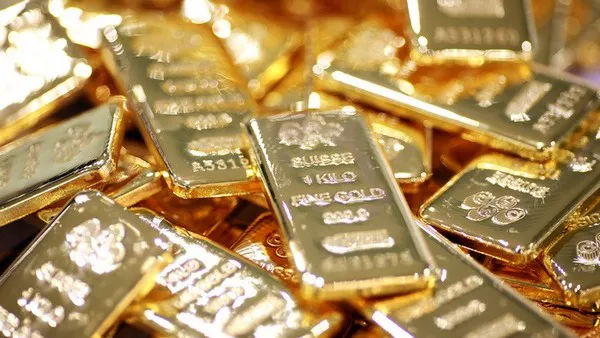Gold has been a symbol of wealth and a store of value for millennia. Its allure transcends cultures and epochs, making it a critical asset in the financial markets. Among the various ways to invest in gold, gold futures stand out as a sophisticated instrument that offers unique advantages and challenges. This article delves into the intricacies of gold futures, explaining what they are, how they function, their significance, and the factors influencing their prices.
What Are Gold Futures?
Gold futures are standardized contracts traded on futures exchanges, such as the COMEX division of the New York Mercantile Exchange (NYMEX). These contracts obligate the buyer to purchase, and the seller to sell, a specified quantity of gold (typically 100 troy ounces) at a predetermined price on a future delivery date. The standardized nature of these contracts ensures that they are fungible and can be traded easily in the market.
The Mechanics of Gold Futures
Gold futures operate on a leverage basis, meaning that traders are only required to deposit a fraction of the contract’s total value, known as the margin. This margin can vary but is typically around 5-10% of the contract value. Leverage magnifies both potential gains and losses, making gold futures a high-risk, high-reward investment.
Key Components of a Gold Futures Contract
Contract Size: The standard contract size for gold futures on the COMEX is 100 troy ounces.
Delivery Date: The specific month in which the contract expires and the gold must be delivered if not offset by an opposite trade.
Price: The agreed-upon price at which the gold will be bought or sold.
Tick Size: The minimum price movement, which on the COMEX is $0.10 per troy ounce, or $10 per contract.
How Are Gold Futures Traded?
Gold futures are traded on exchanges, with the COMEX being the most prominent. Traders can take two main positions:
- Long Position: The buyer agrees to purchase gold at the contract price upon expiration.
- Short Position: The seller agrees to sell gold at the contract price upon expiration.
The Role of Speculators and Hedgers
The gold futures market comprises two primary participants: speculators and hedgers.
Speculators: These traders seek to profit from price movements in the gold market. They buy futures contracts when they anticipate rising gold prices and sell them when they expect prices to fall. Speculators provide liquidity to the market, facilitating smoother price discovery.
Hedgers: Typically, these are producers or consumers of gold who use futures contracts to mitigate the risk of price fluctuations. For example, a gold mining company might sell futures contracts to lock in a price for its future production, ensuring a predictable revenue stream.
Pricing of Gold Futures
The price of gold futures is influenced by several factors:
Spot Price of Gold: The current market price of gold is the most significant factor.
Interest Rates: Higher interest rates increase the cost of holding gold, which can depress futures prices.
Market Sentiment: Economic indicators, geopolitical events, and changes in supply and demand can impact sentiment and, consequently, prices.
Inflation: Gold is often seen as a hedge against inflation, so expectations of rising inflation can drive up futures prices.
Currency Fluctuations: As gold is typically priced in U.S. dollars, fluctuations in the value of the dollar can influence gold futures prices.
The Importance of Gold Futures
Gold futures play a crucial role in the global financial system. They provide a mechanism for price discovery and risk management. By allowing market participants to hedge against price volatility, they contribute to market stability.
Benefits of Trading Gold Futures
Leverage: Traders can control a large position with a relatively small amount of capital.
Liquidity: Gold futures markets are highly liquid, allowing for easy entry and exit.
Diversification: Gold futures offer a way to diversify investment portfolios, providing a hedge against other asset classes.
Price Transparency: The standardized nature of futures contracts ensures transparent pricing and minimal risk of manipulation.
Risks of Trading Gold Futures
Volatility: The leverage in gold futures can lead to significant losses if the market moves against the trader’s position.
Margin Calls: If the market moves unfavorably, traders may be required to deposit additional funds to maintain their positions.
Complexity: Understanding and effectively trading futures contracts require a high level of expertise and experience.
The Evolution of Gold Futures
The concept of futures trading dates back to ancient times, but the modern system of gold futures trading began in the 1970s. This period saw the end of the Bretton Woods system and the decoupling of gold from the U.S. dollar, leading to increased volatility and the need for hedging mechanisms. The COMEX started offering gold futures contracts in 1974, which revolutionized the way investors and companies managed their exposure to gold prices.
See Also Why Gold Will Skyrocket
Conclusion
Gold futures are a powerful tool for investors, speculators, and hedgers alike. They offer unique opportunities and challenges, requiring a deep understanding of market dynamics and a careful approach to risk management. By providing a mechanism for price discovery and risk mitigation, gold futures contribute significantly to the stability and efficiency of the global financial system.
Whether you are a seasoned trader or a novice investor, understanding gold futures is essential for navigating the complex world of commodities trading. Their role in the financial markets underscores the enduring significance of gold as a valuable and strategic asset.


